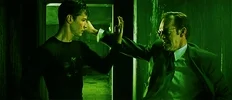Sekiro's Got Some Great Lore, But It's Gated Behind a Terrible Translation - So I Fixed It.
Mod
Lots of people have complained that Sekiro's story feels shallow or confusing compared to many of the souls games, and I blame it heavily on the translation. The plot of Sekiro and the backstory is rich and vivid, but constantly sabotaged by confusing translation choices and just plain old mistakes. No, that Centipede guy isn't named "Giraffe". Historical and mythological references are ignored or abandoned in some places, and in others unexplained to the point of confusion. Terminology is rarely, if ever, consistent - there are many items or ideas referred by different names throughout the game for some reason, even though they're the same in Japanese. It seems a very slapped together effort with multiple translators who didn't have a competent editor, and weren't communicating with one another.
I went through the English and Japanese scripts with some of my Japanese friends, and we came up with more fitting terms, fixed grammar and translation mistakes, and restored a lot of the historical references that were lost in the original. I won't say that every change I made is objectively the best, and I'm open to suggestions and discussion. If you're a history or mythology nerd that has any suggestions - please, I'm all ears.
Sekiro has so many great nods to history and mythology it's hard to know where to start explaining it all. A good source is probably the "Fountainhead," which is really something of a mistranslation. The Japanese character used here, "源”, does refer to the origin or source of a body of water - but it's also the title of a famous Japanese Royal Clan - The Minamoto Clan. There's a bit of a double entendre going on here, whenever the characters speak of the "Fountainhead Waters" It means both "Waters from the source" and "Waters of the Minamoto."
The Minamoto had fallen out of power mostly by the Sengoku Period, but were still of the royal bloodline, which explains how they manage to have a fancy palace over on a mountain. It's also notable that the Minamoto were most dominant in the Heian Period and during the Genpei War. That's why the soldiers of the Fountainhead are dressed so oddly. They're wearing the elaborate armor from that time period, armed with classical Japanese longbows which had fallen out of favor by the Sengoku period, in lieu of rifles. Driving the point home is their architecture, which is very Chinese-inspired, and resembles the Heian structures of things like the Jingu Shrine in Kyoto.
https://www.japanvisitor.com/images/content_images/heian-shrine-2017-2.jpg
Even the soccer soldiers are a reference to the Heian period and the popular ball game, Kemari, during that time.
There's a lot of interesting historical context here that can help explain the lore of Sekiro, but without a proper translation it's hard to recognize things like this.
Well, here's the Mod
https://www.nexusmods.com/sekiro/mods/87/















